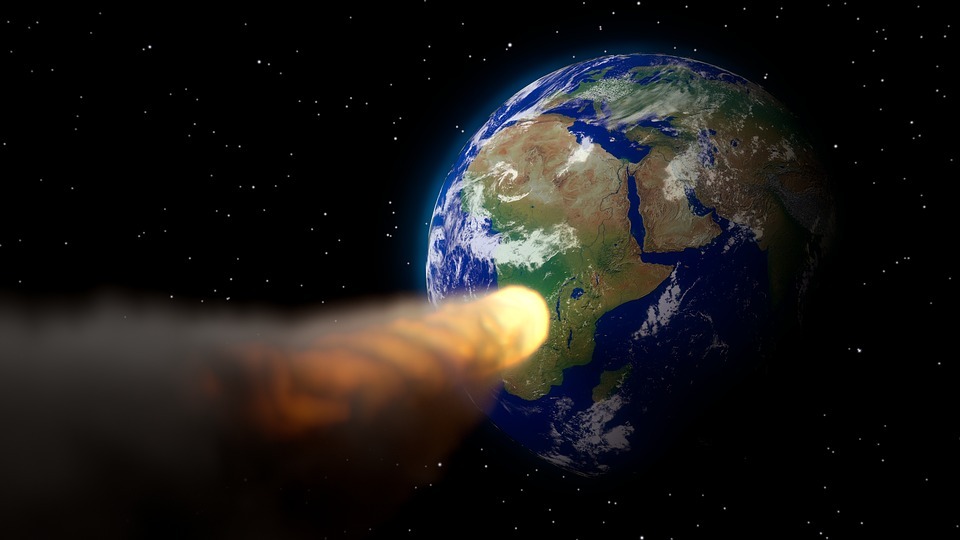Asteroids and Comets have been circling space for thousands of years. We have been reading about them and even watching them in books and movies etc. Although scientists have been able to discover so much about them but there is still a lot that needs to be studied. The universe is so big that it is fairly impossible for humans to learn everything within a month or a year. Previous findings have taken years of constant research. Today, scientists believe that asteroids are key to understanding how the solar system came to be.
Asteroids are leftovers of the early solar system
It has been theorised that our solar system came into being when a compressed group of gas coalesced the sun. As a result, it eventually began fusing the atoms and creating protostar. While that was happening, the dust and debris surrounding the sun also began to coalesce. The small grains turned into small rocks and smashed into each other to form bigger rocks. This chaotic period gave birth to the moons and planets we see today. If we were to study the asteroids, we might be able to understand and get an insight into what our solar system looked like billions of years ago.
Most Asteroids are in a “belt”
While the entire solar system is full of asteroids and comets but there are some as well that especially exist between the orbits of Mars and Jupiter. Some scientists are off the view that they could have turned into a planet if Jupiter was not nearby. Furthermore, it is assumed that this “belt” consists of thousands of asteroids that are located close to each other. Infact, there are usually hundreds of thousands of miles between them. Then again, this gives us an idea of how huge our solar system is.
Different things make up asteroids
When it comes to determining the composition of an asteroid, it depends on how close it is to the sun. The ice nearby is melted by the star that is closeby, which puts pressure as well and blows out elements that tend to be lighter. NASA explains that there are three types of asteroids. The first type is Dark C, which makes up for most of the asteroids in the outer belt. They tend to have little hydrogen and helium since they are close to the sun.
The second type is the Bright S that is located in the inner belt, while the third type is Bright M asteroids. They are located in the middle of the asteroid belt and are mostly made of metallic iron.
Asteroids also lurk near planets
There are some asteroid types as well that have been found to lurk near planets as well and NASA has a classification for them as well. Even though Trojans tend to stay in the same orbit as a planet but they also hover in a special spot known as a Langrangian point that balances the pull of the planet’s gravity as well as the sun’s. As a result, Trojans near both Neptune and Jupiter have been discovered. Atleast one was discovered in 2011.
Furthermore, scientists state that we have near-earth asteroids as well that could one day post a threat to the planet as well. However, at the moment no one has been able to discover an asteroid that may one day collide with our planet.
Asteroids have moons
We have always assumed that moons orbit planets but we do not know that asteroids tend to have smaller bodies that orbit them as well. Dactyl is known to be the first that was discovered in 1993, orbiting a large asteroid named Ida. It is said that more than 150 asteroids tend to have moons while more are being discovered regularly.
Asteroids are too small to support life
Asteroids are too small to support life. They are so tiny that they can barely hold onto the atmospheres. The reason they are irregularly shaped is that their gravity is too week and cannot pull their shape into a circle. NASA says that the total mass of asteroids in our solar system is less than the moon. This gives us an idea of how small they are. Despite the fact that they are tiny but sometimes water may also flow on the surfaces of asteroids. For instance, the Vesta observations released in 2015 highlighted gullies that might have been carved out by water. The theory behind it is that when a smaller asteroid collides with a bigger asteroid, it releases a layer of ice in the bigger asteroid. As a result, the ice turned into water streaked across the surface of the asteroid.
Final Word
Asteroids have no doubt fascinated researchers in the past and will continue to do so in the future as well. The above-mentioned facts are just the tip of the iceberg. While we are not aware of what the future might hold but we can surely study the asteroids and comets today to understand the previous events that shaped our planets and solar systems.



